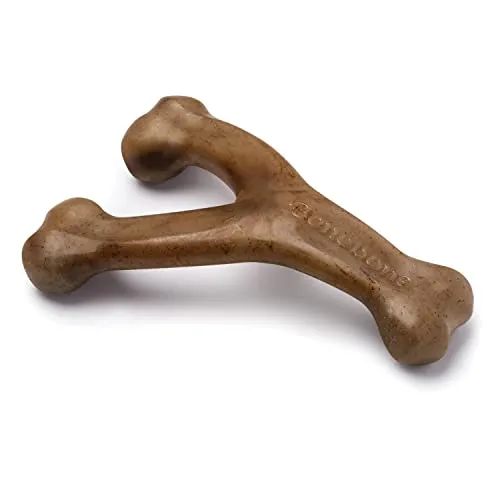Protecting our beloved canine companions from pesky parasites is a top priority for every responsible dog owner. The constant battle against fleas, ticks, and various internal worms can feel overwhelming, leading many to seek convenient, all-in-one solutions. In recent years, the market has seen a surge in popularity for Dog Flea And Worm Treatment Combined products, promising comprehensive protection in a single, easy-to-administer dose. While these integrated approaches offer undeniable convenience, it’s crucial to understand their benefits, limitations, and potential risks before deciding if they are the best choice for your furry friend. This guide will delve into the details of these combination treatments, helping you make an informed decision alongside your veterinarian.
Understanding All-in-One Parasite Treatments
These advanced products are meticulously formulated to deliver broad-spectrum protection by combining multiple anti-parasitic agents into one medication. A typical dog flea and worm treatment combined often includes:
- An adulticide: Specifically designed to kill adult fleas, breaking their life cycle.
- Anthelmintic medications: Targeting and controlling common intestinal worms such as roundworms and hookworms.
Popular formulations often feature active ingredients like lotilaner paired with milbemycin oxime, or versatile compounds such as moxidectin or selamectin. By consolidating a range of parasite controls into a single monthly prescription, whether it’s a spot-on application, a pill, or a palatable chew, these products offer a streamlined approach, significantly simplifying the routine compared to managing separate treatments for each parasite. For those looking for broader protection, some products even extend to comprehensive tick and worm treatment for dogs, ensuring a wider shield against external and internal threats.
Advantages of Combined Flea and Worm Treatments
The appeal of an all-in-one solution is multifaceted, offering several compelling benefits for busy pet owners:
- Increased Convenience: A single dose replaces multiple treatments, saving time and reducing the complexity of your dog’s preventative care schedule.
- Ease of Administration: Whether it’s a chewable or a spot-on, a single application simplifies the process, making it less stressful for both dog and owner.
- Comprehensive Protection: Helps ensure dogs receive consistent and thorough protection against a spectrum of common parasites.
- Reduced Missed Doses: Consolidating treatments minimizes the chance of forgetting a dose, maintaining continuous coverage.
- Broad Spectrum Control: Offers protection against multiple types of parasites in one step, often including fleas and various common worms.
- Potential Synergistic Effects: In some cases, the combined components can work together more effectively than individual treatments.
- Simplified Inventory: Reduces the number of products pet owners need to purchase and store.
Potential Disadvantages and Considerations
While convenient, it’s essential to weigh the potential drawbacks of using a dog flea and worm treatment combined:
- Increased Pesticide Exposure: Administering multiple chemicals simultaneously means a higher overall pesticide load for your dog.
- Heightened Risk of Reactions: If your dog experiences an adverse reaction, pinpointing the exact ingredient responsible can be challenging. This is especially important for dogs that may be more sensitive. You might need to explore specialized flea and tick treatment for sensitive dogs if your dog shows signs of irritation.
- Resistance Development: Continuous exposure to multiple active ingredients could, over time, contribute to parasite resistance.
- Drug Interactions: The combined components might interact with each other or with other medications your dog is taking, potentially leading to unintended effects.
- Dosing Accuracy: Efficacy relies heavily on accurate dosing based on your dog’s precise weight, which can be critical.
- Limited Worm Coverage: Most combination treatments do not protect against all types of worms, such as lungworm, whipworm, or certain tapeworms, requiring additional targeted treatments.
 Durable chew toy for dogs
Durable chew toy for dogs
Are the Ingredients Generally Safe?
Manufacturers of these products conduct stringent safety tests, often overseen by regulatory bodies. They are designed to safely protect dogs from fleas, worms, and sometimes ticks in one monthly treatment. However, it’s important to remember that these medications utilize potent compounds to eliminate parasites.
While approved for veterinary use, these chemicals are inherently designed to be toxic to parasites. Therefore, a degree of caution is always warranted. Responsible pet ownership includes minimizing unnecessary pesticide exposure for our dogs whenever possible. Combination treatments introduce a higher overall chemical exposure compared to using single-active ingredients only when truly necessary or targeting specific parasites.
Do Interactions Pose Risks?
Another crucial consideration is the potential for multiple pharmaceutical components within the treatment to interact with each other or with any separate prescription medications your dog may be taking. Mixing anthelmintics (wormers), insecticides (flea/tick killers), antibiotics, pain relievers, or other routine medications has the potential for unintended side effects. For example, if your dog experiences digestive upset, certain medications like cerenia pills for dogs might be prescribed, and understanding potential interactions is key. Similarly, the common query about dogs and pepto highlights the need for careful consideration of all medications.
Veterinary guidance is paramount when using these products, especially if your dog is on any other routine medications. While adverse interactions may not be common, the long-term effects of these complex drug combinations should be carefully monitored by a professional. Any signs of lethargy, vomiting, diarrhea, or unusual behavior should prompt an immediate call to your vet.
Can You Get an All-in-One Flea, Tick, and Worm Treatment for Dogs?
Yes, comprehensive all-in-one products are available in many regions to provide protection against fleas, ticks, and common intestinal worms with a single monthly product. These advanced formulations typically require a veterinary prescription due to the potency and spectrum of their active ingredients. Examples include:
- Combination tablets containing sarolaner, moxidectin, and pyrantel, which offer protection against fleas, ticks, lungworm, and common roundworms/hookworms.
- Tablets with afoxolaner and milbemycin oxime to control fleas, ticks, mites, and lungworm.
- Spot-on solutions with imidacloprid and moxidectin that repel and kill fleas while also treating roundworms, hookworms, whipworms, and ear mites.
Since these products are prescription-only, specific brand names cannot be legally mentioned without a veterinary consultation. Always discuss the most suitable options for your dog with your veterinarian.
Do All-in-One Flea and Worm Treatments for Dogs Protect Against All Types of Worm?
No, it’s a common misconception that most all-in-one dog flea and worm treatment combined products offer universal protection against all types of intestinal worms. Here’s a breakdown of their typical coverage:
- Common Worms: They are generally very effective against prevalent worms like roundworms and hookworms. The medications often include ingredients such as milbemycin, moxidectin, or pyrantel specifically targeting these parasites.
- Limited Scope: However, these treatments usually do not cover all worm species. For instance, many do not protect against whipworms, certain types of tapeworms, or heartworm disease (which might require a separate preventative, especially in endemic areas).
- Drug Specificity: Different worm species require distinct drug classes for effective eradication. No single product currently available provides 100% comprehensive coverage against every conceivable internal parasite.
Therefore, while combination flea and worm treatments significantly contribute to intestinal parasite control for dogs, they should not be considered a complete, standalone solution. Regular fecal testing and additional targeted deworming treatments, guided by your veterinarian, are often necessary to ensure comprehensive worm management, especially if exposure risks are high or if previous preventatives have failed. Understanding these limitations and working closely with your vet is vital for your dog’s overall health.
 Lavender scented dog waste bags
Lavender scented dog waste bags
How Do You Administer All-in-One Treatments?
All-in-one preventative products for dogs come in several convenient forms to suit different preferences and dog temperaments:
- Spot-on Topicals: These are liquid solutions applied directly to your dog’s skin, typically on the back of the neck or between the shoulders. Accurate dosing based on your dog’s weight is crucial for effectiveness.
- Oral Chewables: Highly palatable, flavored chewable tablets that dogs usually readily accept as a treat.
- Oral Tablets: Traditional tablets that can be swallowed whole or hidden in food. Some are coated to mask any unpalatable flavors.
Spot-On Treatments: A Closer Look
A spot-on treatment is a topical liquid medication applied directly onto a dog’s skin, usually at a specific point where the dog cannot easily lick it off. Key characteristics include:
- Localized Protection, Systemic Action: The active ingredients are absorbed through the skin into the bloodstream or spread across the skin’s surface, providing widespread protection.
- Common Use: Widely used for the prevention and treatment of fleas, ticks, and internal parasites.
- Duration: Effects typically last for a specific period, most commonly around 30 days.
- Application: Timing and precision are important for proper absorption and efficacy.
- Combined Options: Yes, all-in-one spot-on products are available that combine both flea and worm protections, offering an alternative to oral medications.
How Often Do You Administer All-in-One Treatments?
The majority of all-in-one products combining flea, tick, and worm control are designed for monthly administration. However, it is absolutely essential to always consult the specific product label and, more importantly, discuss the dosing schedule with your veterinarian. Your vet will provide guidance based on your dog’s individual needs, local parasite prevalence, and the specific requirements of your chosen medication.
 Dog themed daily calendar
Dog themed daily calendar
Do Natural All-in-One Treatments Exist?
While there are various natural remedies marketed for flea and worm control, it’s critical to understand their limitations. Many natural options do not provide comprehensive protection against a full spectrum of parasites and are generally not recommended as a substitute for clinically trialled, vet-approved conventional treatments. Some examples include:
- Dog-Friendly Shampoos: Designed to repel or physically remove fleas and ticks.
- Botanical Extracts: Ingredients like neem oil, pyrethrin, and pyrethrum extracts are used in some products to kill parasites.
- Herbal Blends: Certain herbal mixtures claim to treat worms, but often lack robust clinical evidence to support their efficacy.
- Homeopathic Nosodes: These are highly diluted preparations designed to treat parasitic infections, but their effectiveness is not scientifically proven.
- Natural Flea Collars: Often infused with botanical oils to deter parasites.
- Enzymatic Cleansers: Utilize beneficial enzymes to break down organic matter associated with parasites.
It’s important to note that these natural options are generally not proven to be as effective or reliable as conventional, veterinary-prescribed treatments. Furthermore, “natural” does not automatically mean “safe”; natural treatments can also carry risks of side effects and interactions. Always consult your veterinarian before attempting any natural parasite remedies for your dog. An integrated pest management approach, combining natural aids with proven preventatives, might be an option if carefully managed under strict veterinary supervision. However, conventional treatments prescribed by your vet should always be your first course of action for effective and safe parasite prevention.
Can All-in-One Flea Treatments Be Used for Puppies?
Yes, combined worming and flea treatment options are available for puppies, but their use comes with specific considerations due to the unique sensitivities and rapid development of young dogs:
- Age and Weight Restrictions: Only certain products are approved for puppies, typically under minimum age and weight requirements that must be strictly adhered to.
- Critical Dosing: Proper monthly dosing is even more crucial in puppies due to their rapid growth, which can quickly change their weight class and medication needs.
- Pesticide Exposure Risks: Combination treatments introduce a higher pesticide exposure risk in young puppies compared to single-ingredient treatments. Puppy formulations may exclude certain ingredients to minimize this load.
- Heartworm Preventatives: In regions where heartworm is prevalent (less common in the UK but crucial elsewhere), these are often not included in puppy combination treatments and must be started separately if needed.
- Frequent Deworming: Puppies are highly vulnerable to various internal worms, necessitating frequent deworming according to veterinary schedules, which may sometimes involve additional targeted treatments beyond the all-in-one.
Therefore, while combination flea/tick/worm options exist for puppies, they must be used with extreme caution and exclusively under direct veterinary guidance. Starting proper prevention early is important, but products need to be matched meticulously to the puppy’s age, weight, and health status. Always follow minimum age/weight requirements and your veterinarian’s specific recommendations for maximum safety and efficacy.
 Indoor fetch ball dog toy
Indoor fetch ball dog toy
Are All-in-One Treatments a Good Idea for My Dog?
The decision to use a dog flea and worm treatment combined involves balancing convenience with safety and comprehensive protection. These all-in-one solutions offer significant advantages in terms of ease of administration and ensuring consistent parasite control. However, it’s vital to remember their limitations, particularly that they may not cover all types of worms or ticks, and they introduce a higher chemical exposure.
Ultimately, the best parasite prevention plan is highly individualized for each dog, taking into account their lifestyle, geographic location (and associated parasite risks), health status, and any existing medications. Discussing all available options, including their pros, cons, and specific coverage, with your veterinarian will enable you to find the most effective and safest treatment plan for your cherished canine companion. Your vet is the best resource to help navigate these choices and ensure your dog remains healthy, happy, and parasite-free.
Further Reading:
- Cat flea treatment – is prescription really best?
- Cat wormers – is prescription really best?
- Homeopathy for dogs and cats – what’s the evidence?
- Do Rabbits Get Fleas?
- Controlling a Flea Infestation – 5 Dos and Don’ts
